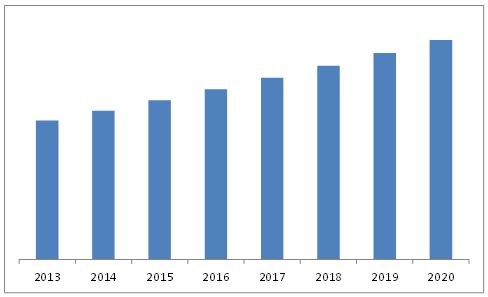LiDAR, an acronym for light detection and ranging, is an emerging technology capable of producing highly accurate images of the earth’s surface and other target objects. This technology provides valuable information for generating 3D elevation models in various engineering and infrastructure applications. LiDAR systems were first conceptualized in the 1960s, but its commercial viability only increased in the past decade with the development of its associated technologies, especially the global positioning system (GPS).
LiDAR systems were primarily used for conducting terrain and coastline mapping through aircrafts and for observing the changes in atmosphere. Corridor mapping still remains the biggest application for this technology due to the rise in infrastructural projects including highway corridors, railways, and electric transmission lines. Cellular infrastructure planning is also a contributing to the growth of corridor mapping application in recent times, especially with the increase in demand for high-speed wireless networks. LiDAR systems are presently very expensive to acquire, and their usage can be cost-effective only if they are deployed for conducting surveys over larger areas. As most of the infrastructure projects undertaken today are on a large scale, keeping in view the requirements for the next 30–40 years, it makes financial sense to use LiDAR in planning and designing of these projects. That is why, corridor mapping is expected to remain as the major application for this technology over the next 5–6 years as well.
Ask for Sample Pages @ Click Here
The automotive sector is being regarded as an emerging and extremely important sector for LiDAR. LiDAR sensors are deployed as a part of the car’s adaptive driver assistance systems (ADAS) for the purposes of obstacle detection, adaptive cruise control, observing lane discipline as well as for several other application areas. As the market for ADAS equipped cars is rising at a high rate, it is expected to fuel the growth for LiDAR market. LiDAR systems are also being used for the testing and development of autonomous cars by many companies including Google, Inc. (U.S.), Volvo AB (Sweden), and Nissan Motor Company (Japan). Upon successful testing of these cars and after approvals from various government authorities, this could open up a potentially huge market opportunity for LiDAR systems. The sensors currently used for the autonomous cars are quite expensive but with further technological developments and breakthrough innovations, like “Puck” introduced by Velodyne Acoustics (U.S.); the costs of LiDAR systems are expected to drastically come down and benefit the automotive sector.


